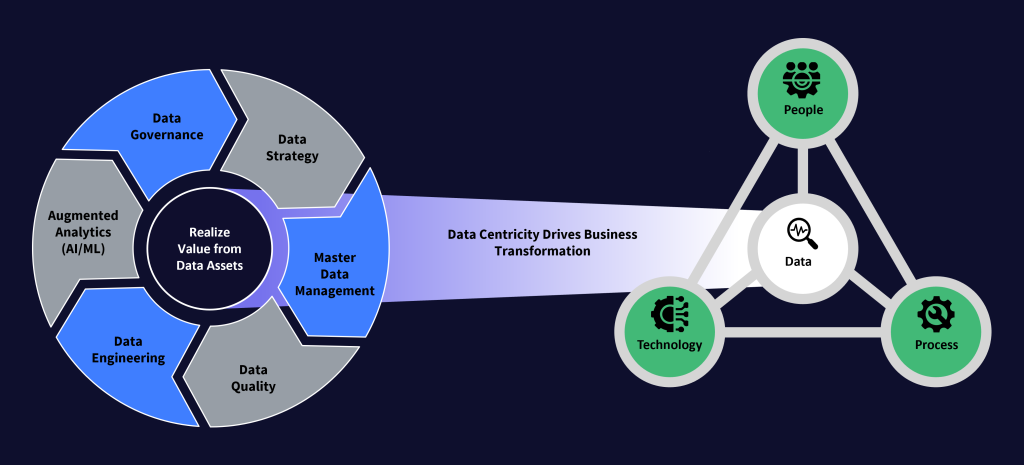Data Transformation
Embracing the power of Data to enable businesses to adapt, innovate, and thrive in
an increasingly complex digital world, helping them to stay agile to evolving market demands.

In today’s digital era, businesses face a daunting task in handling data. The swift expansion of data’s volume, variety, and speed adds to the intricacy of gathering, storing, and gaining significant insights from the available information. Raw data can be a challenge to systematize and derive meaningful interpretations from as it is gathered from various sources. Guaranteeing data precision, uniformity, and dependability is a critical issue, as any inaccuracies in raw data could cause erroneous decision-making.
JK Tech’s Data-Driven Business Transformation Solution provides end-to-end data management services, from data ingestion and transformation to storage and analysis. With these, businesses can navigate the complexities of managing data and unlock the insights needed to drive innovation and make informed decisions in today’s data-driven world.

Data transformation is the process of converting raw data into a more structured and usable format. It involves cleaning, organizing, and reshaping data to enhance its quality, consistency, and relevance. This transformation is essential for preparing data for analysis, reporting, and decision-making, ensuring that it is accurate, well-organized, and aligned with the specific needs and objectives of the organization.
Businesses aiming to evolve and optimize their operations, leverage Data Transformation to refine and structure raw data, ensuring it aligns with strategic goals. The process, often facilitated by Business Transformation Services, enhances data quality and usability, paving the way for Data-Driven Business Transformation. By utilizing these solutions, businesses can make informed decisions, streamline processes, and ultimately achieve their broader transformation objectives.
There are four primary types of data transformation, and implementing Data Transformation Solutions is integral to each:
Structural Transformation: Involves changing the format or structure of data, such as converting data types or rearranging information.
Semantic Transformation: Focuses on ensuring data consistency and meaning by standardizing measurement units, resolving discrepancies, and addressing semantic variations.
Entity Resolution: Deals with identifying and reconciling duplicate or similar records within datasets, enhancing data quality and accuracy.
Normalization and Aggregation: Encompasses organizing data to eliminate redundancies and inconsistencies, often through processes like normalization (minimizing data redundancy) and aggregation (combining data for summary analysis). These transformations collectively contribute to refining raw data for improved analysis and decision-making.
Data transformation is pivotal as it streamlines the restructuring of sales data for comprehensive cross-departmental analysis and ensures consistency when aggregating customer feedback. Incorporating data transformation within business transformation solutions is crucial for optimizing marketing efforts by cleaning and validating customer contact information. These processes contribute to accurate, relevant data that supports effective strategic decision-making.

Chief Technology Officer

Head- Data and Analytics

Head - AI/ML
Use the form below to get in touch

Hello, I am Aria!
Would you like to know anything in particular? I am happy to assist you.